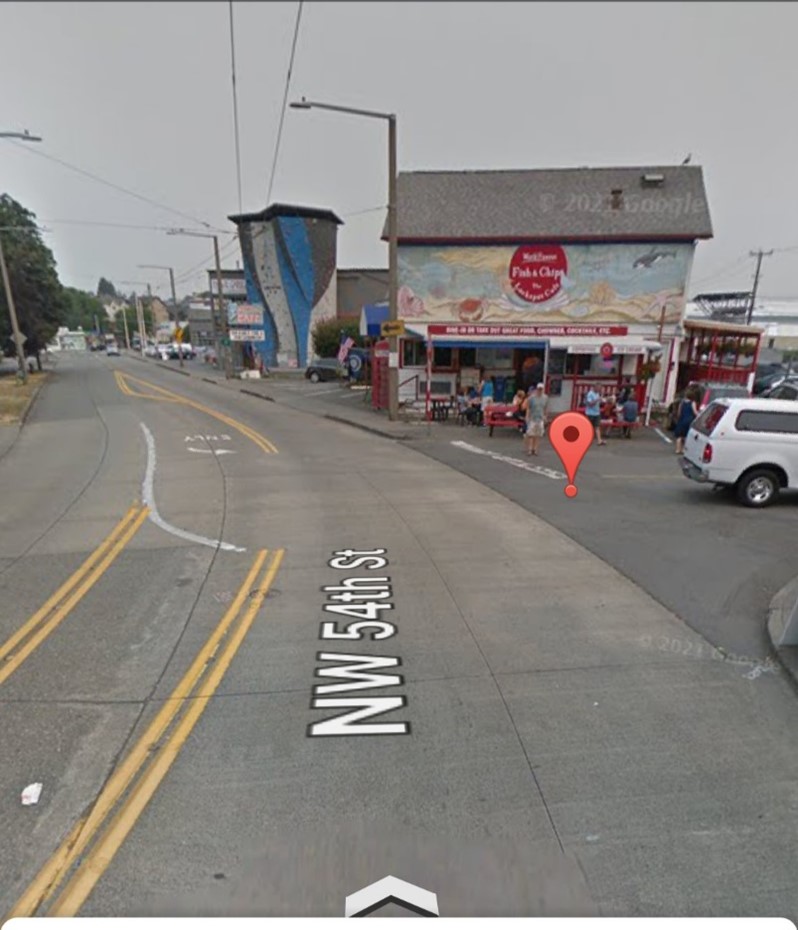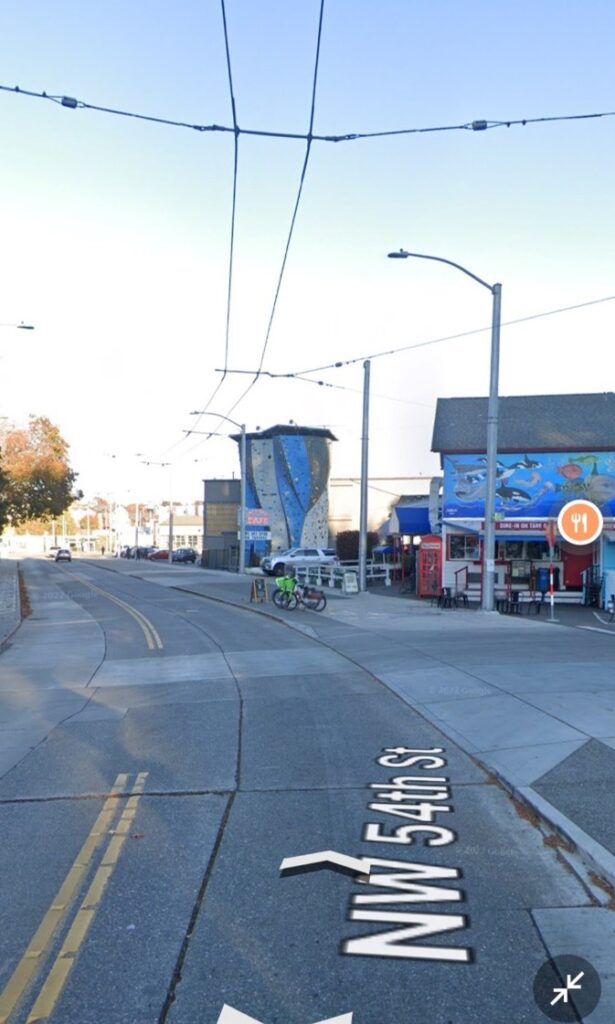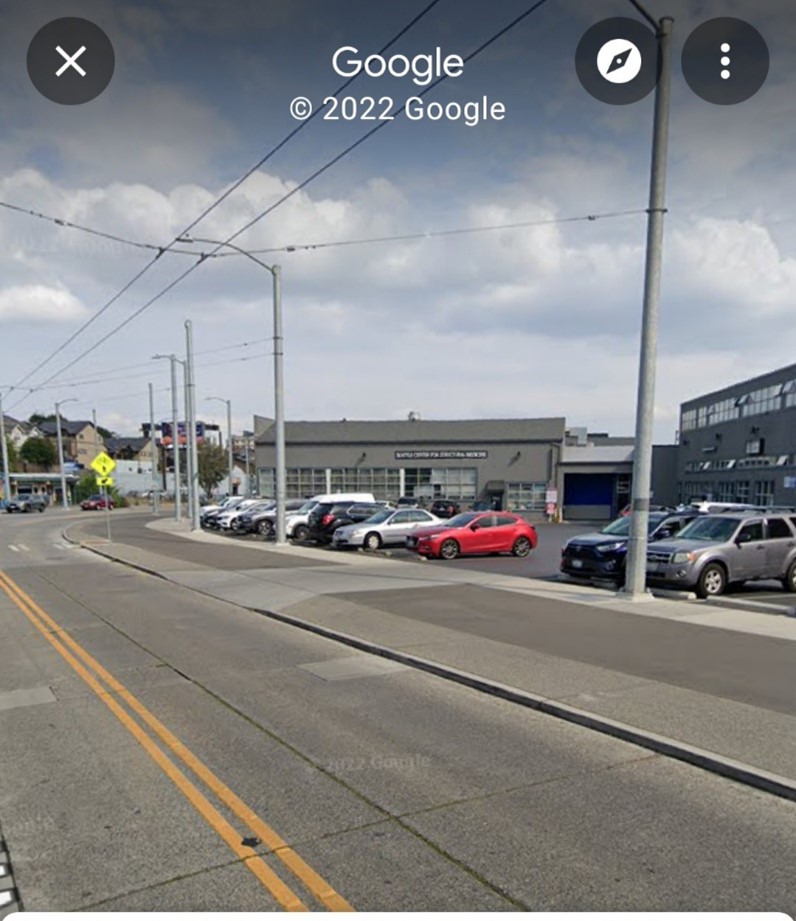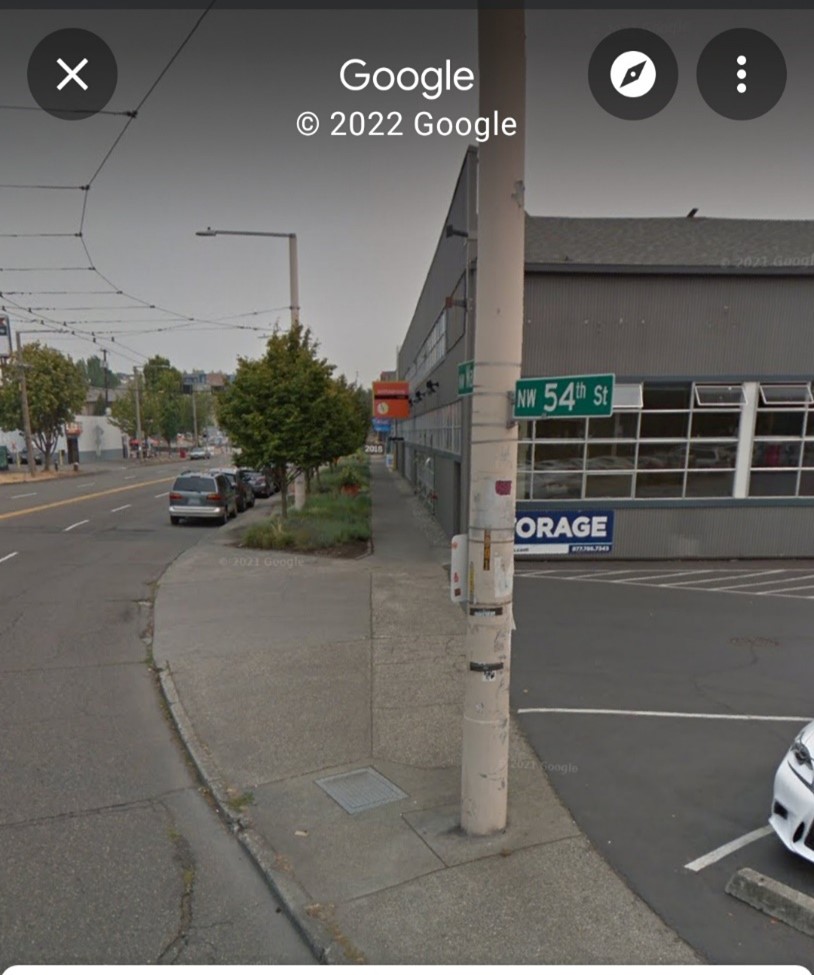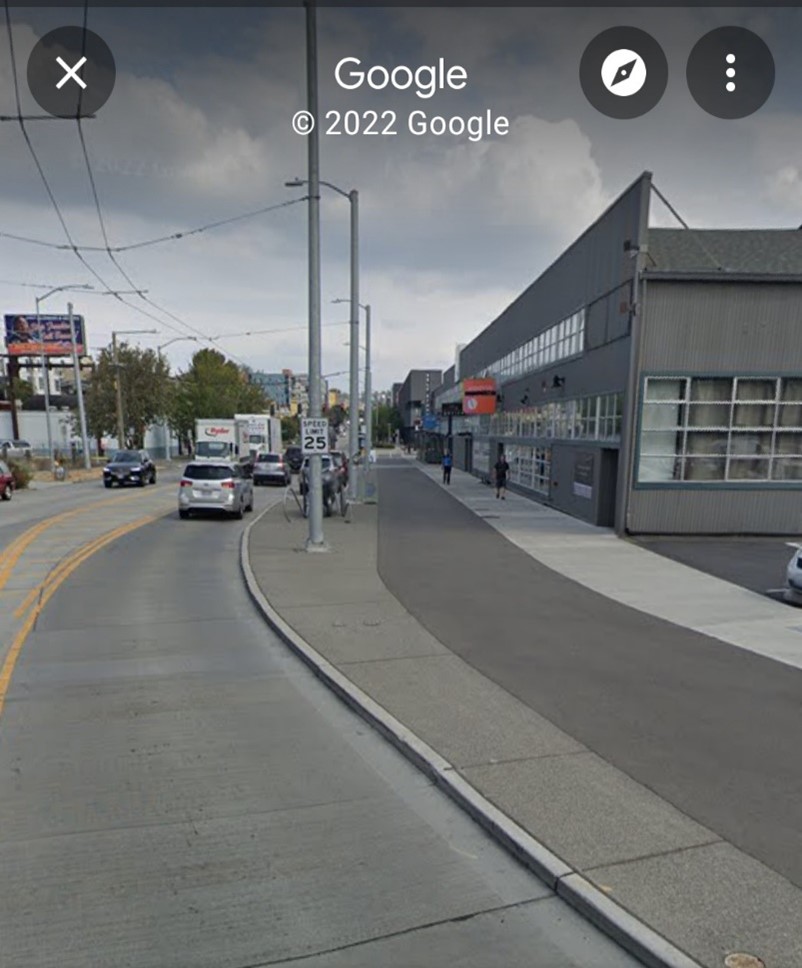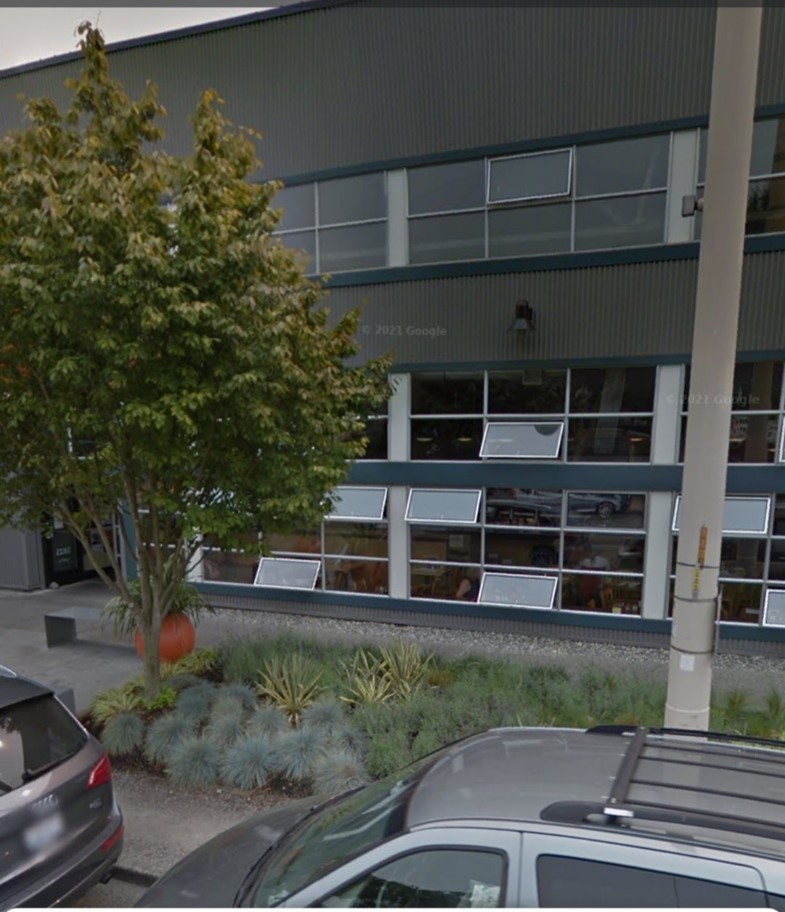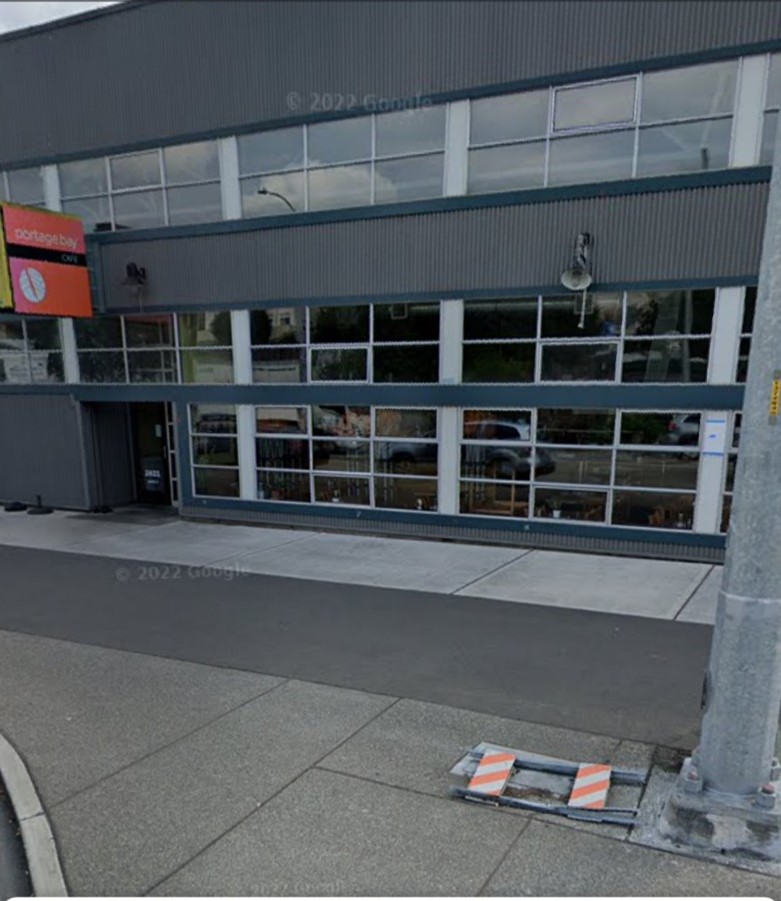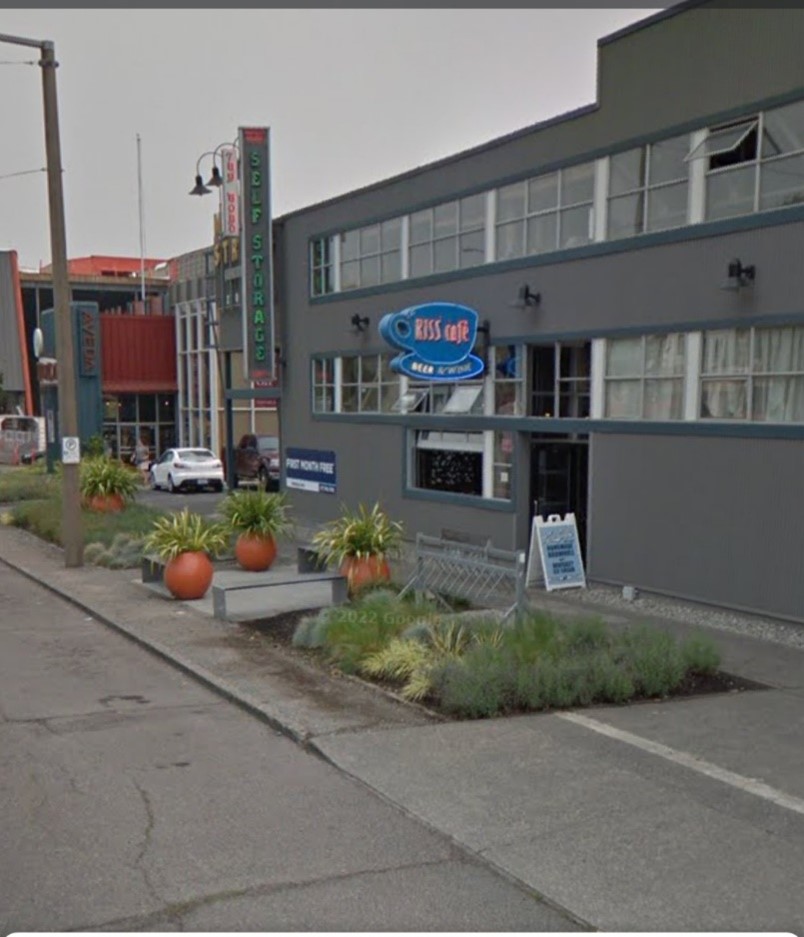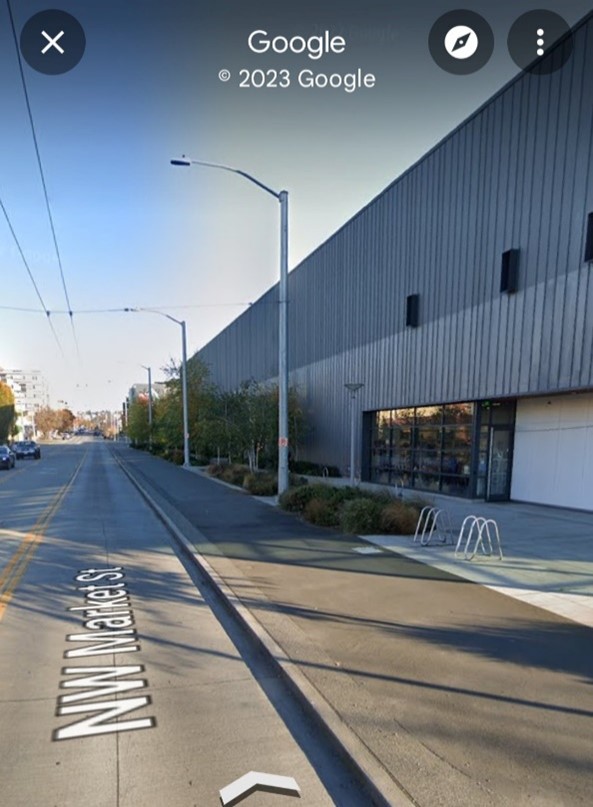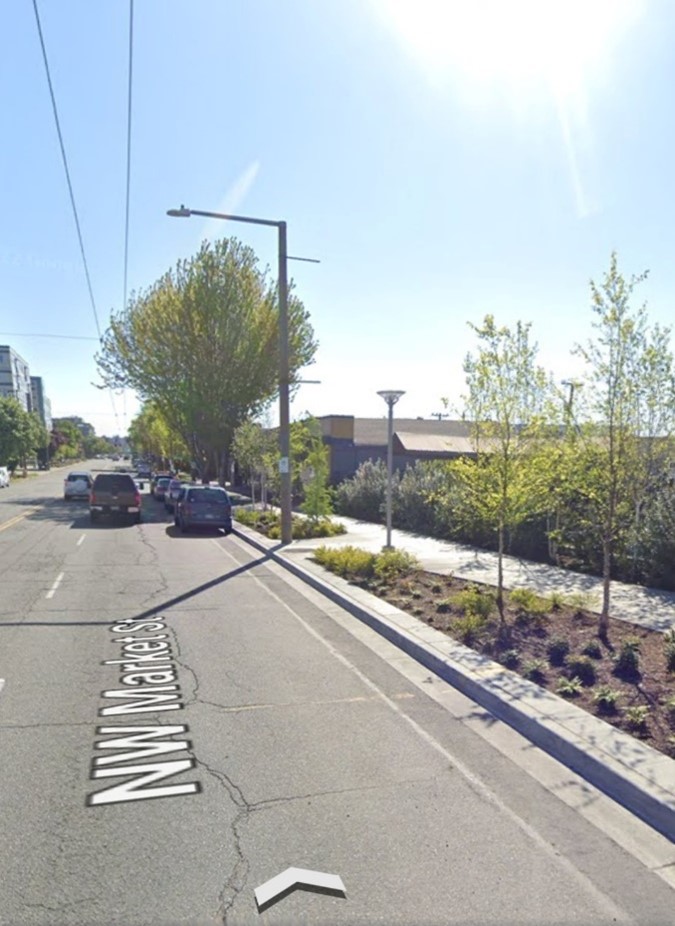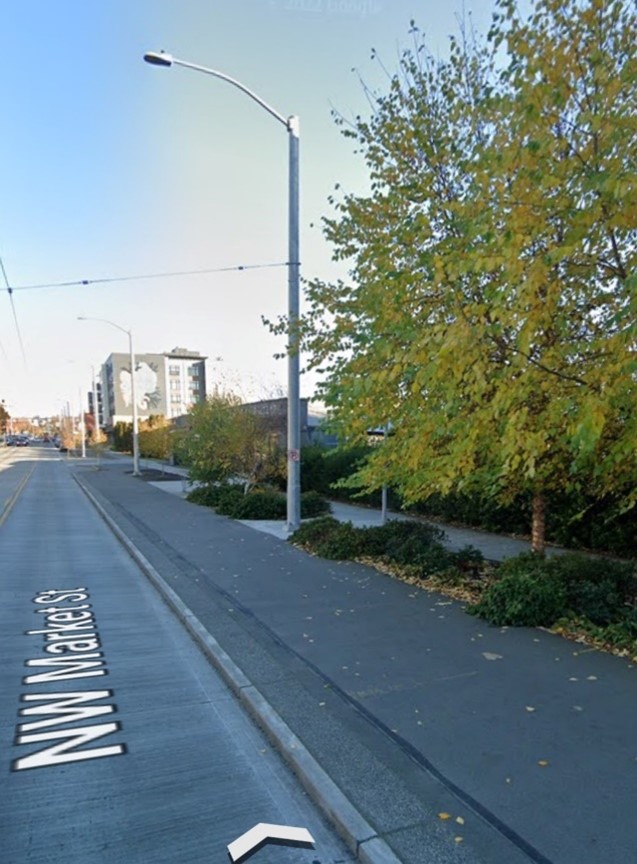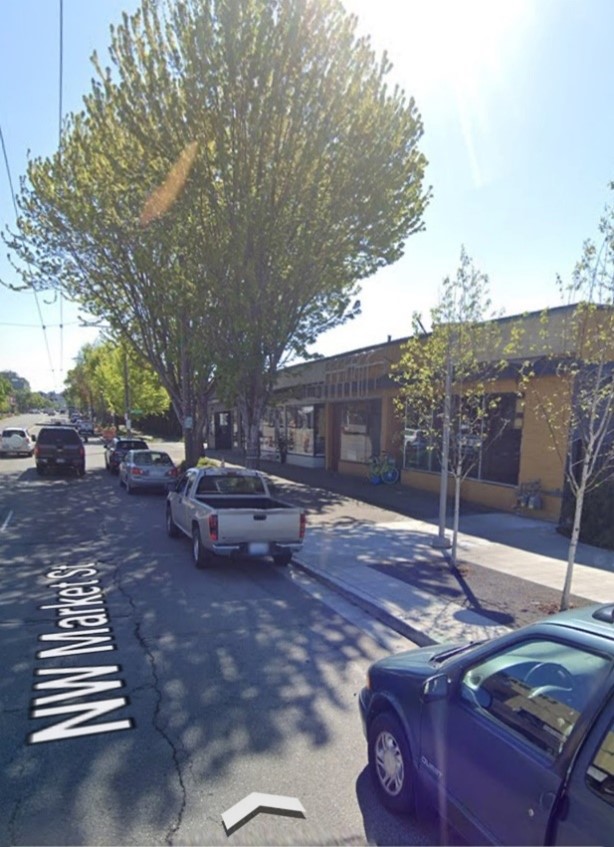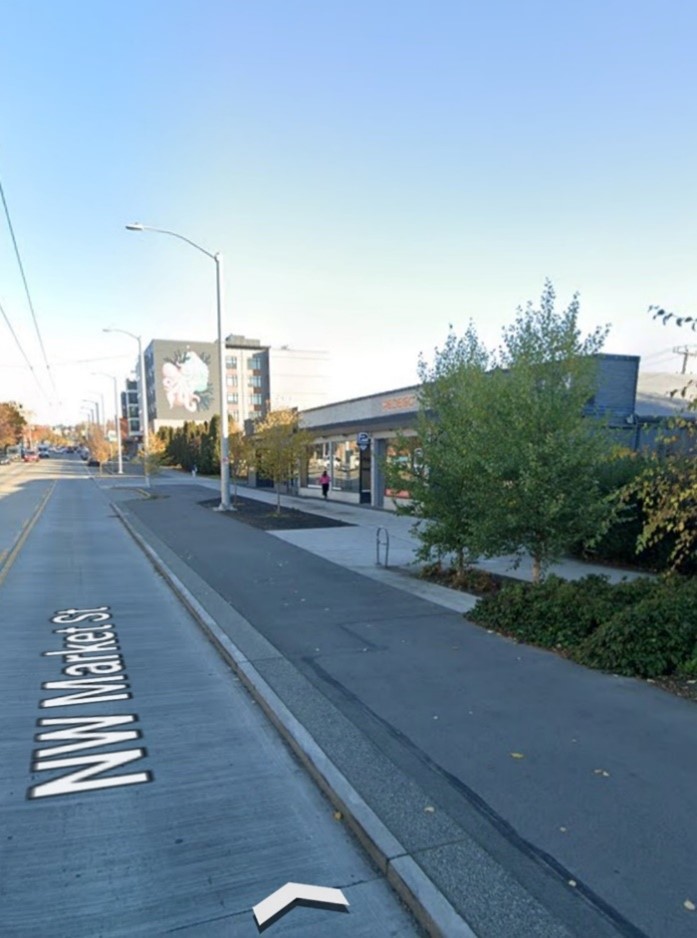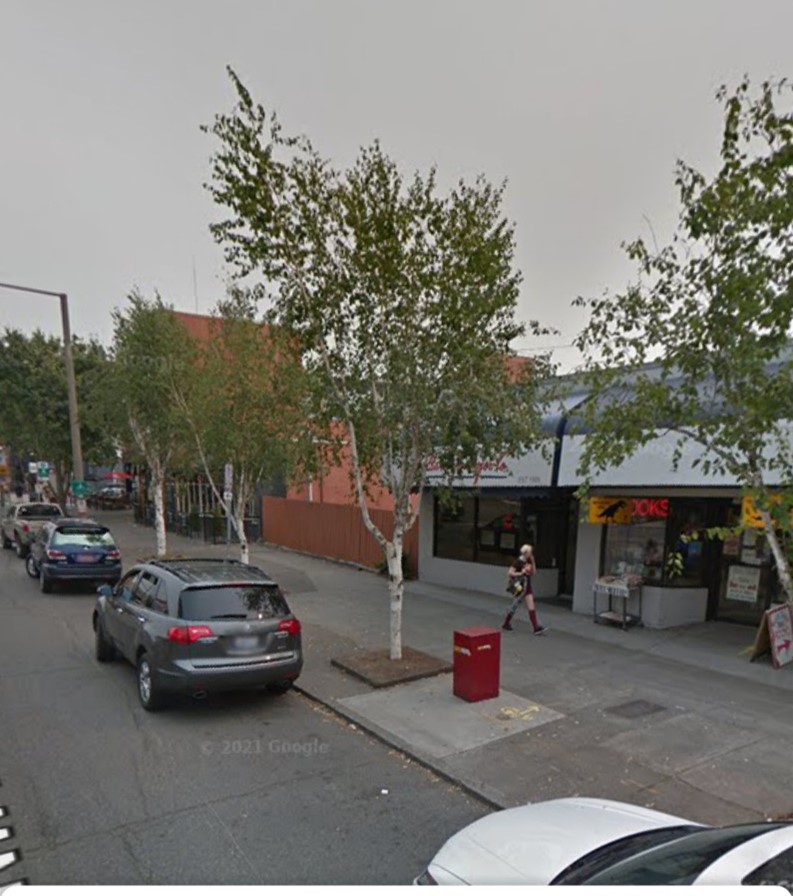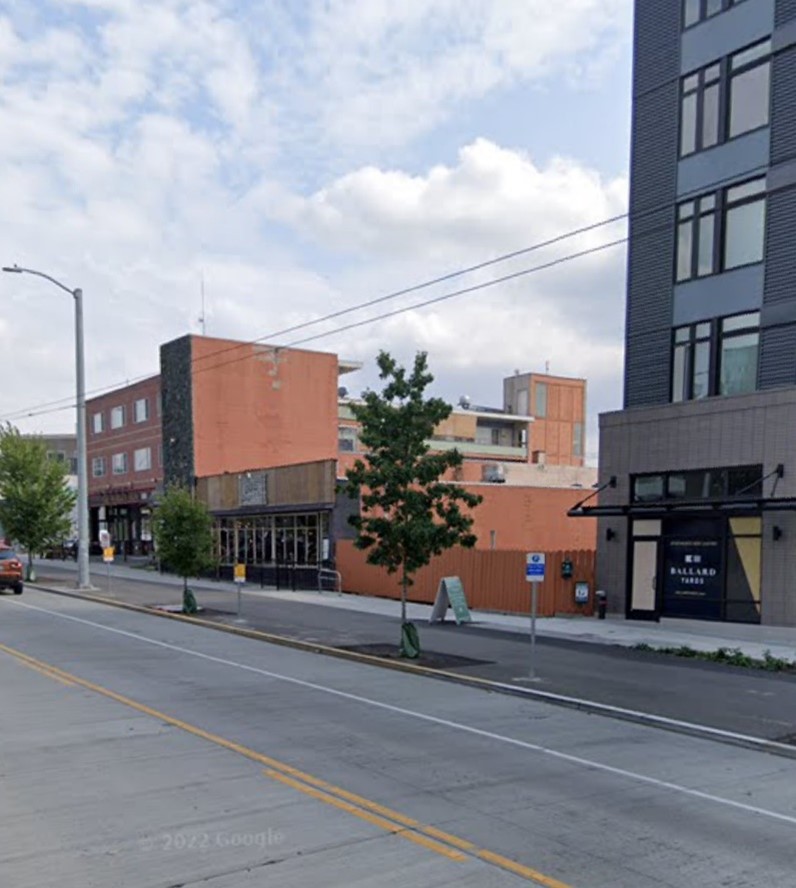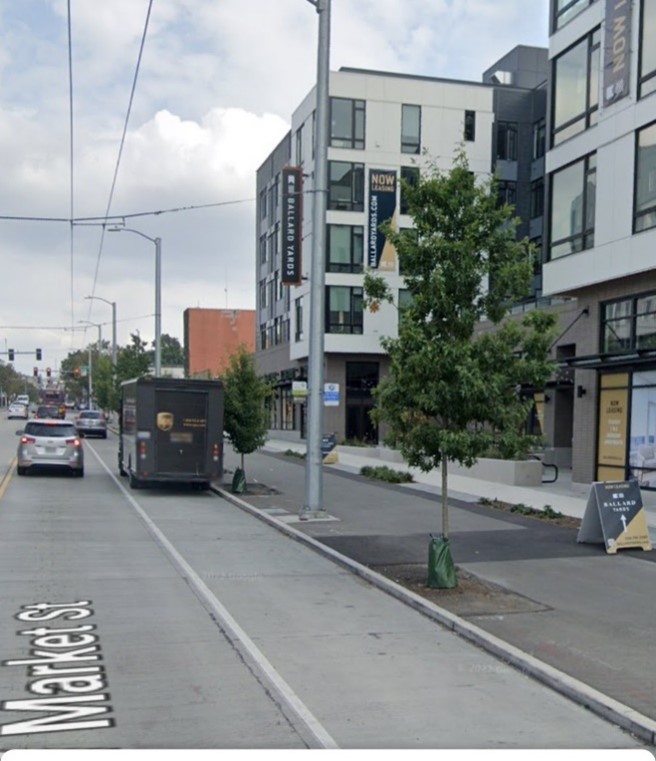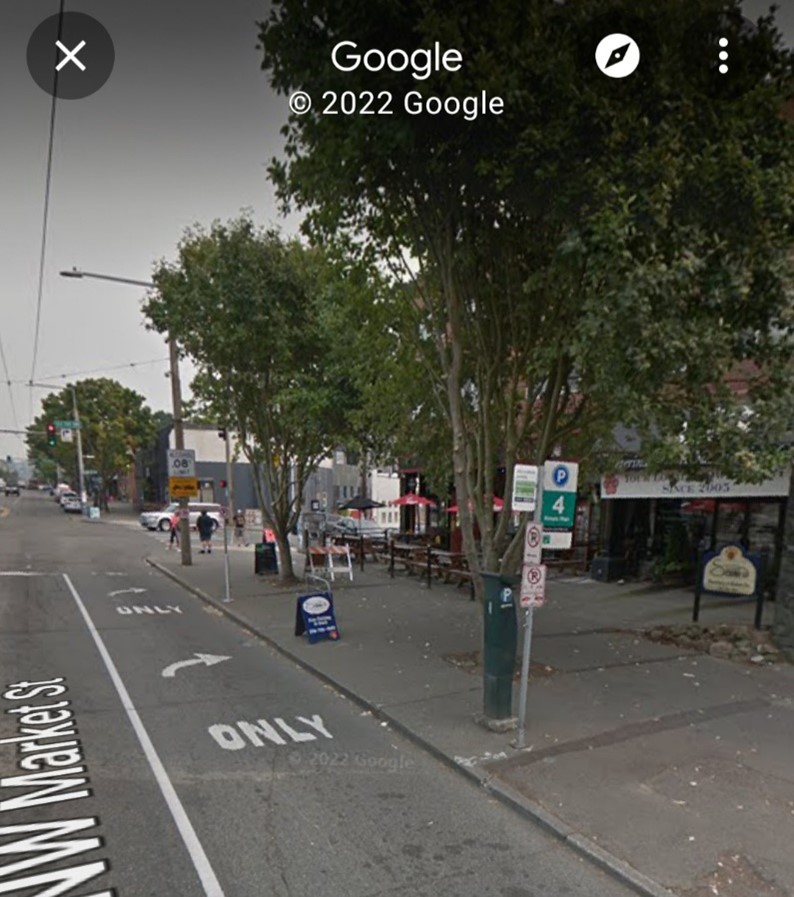Today I am sharing an update in real-time about the next steps to complete the Burke-Gilman Trail ‘Missing Link’. Today I wrote Mayor Bruce Harrell and SDOT Director Greg Spotts requesting outreach and design of the ‘Missing Link’ to be completed along Market Street, Leary Avenue, and 17th Avenue. The most basic way to see what I am proposing is to walk along the constructed trail between 24th Avenue and the Ballard Locks along Market Street. I have included before/after photos of Market Street to see the benefits this infrastructure provides to our community.
In this blog post, I have included a brief background on this work, my entire letter to Mayor Harrell and Director Spotts, the map of the route I am proposing, the cross-section of the baseline considerations I am asking for to be designed, and the before and after photos of Market Street that was constructed with the baseline considerations I am requesting.
Community engagement is critical to me. To ensure the request I made today reflects community input, I held three meetings of stakeholders, specifically one meeting with commercial stakeholders, one meeting with industrial stakeholders, and one meeting with bicycle stakeholders. These meetings each contained the same information about my proposal and the purpose of these meetings was to gain specific feedback ahead of making my formal ask to Mayor Harrell and Director Spotts. The biggest takeaways from these meetings were clear: people want the Missing Link completed as soon as possible.
As always, I meet weekly with D6 residents, so if you have questions about anything in this blog post and are a D6 resident, you can request to meet with me during office hours. Sign up here to request a meeting during my district office hours.
Background
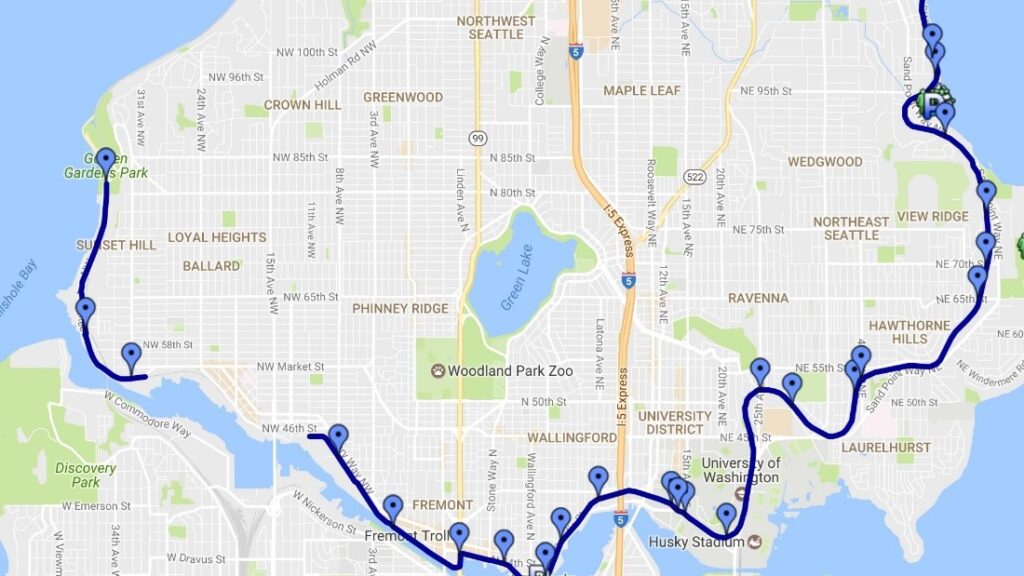
For those that have been following this conversation for 5 or 30 years, you already know I remain committed to completing this connection and that my position changed between 1994 and today because Ballard has changed. In 1994 I believed Shilshole Avenue was the best choice for the Burke-Gilman trail and in the last decade, it has become apparent to me that Market Street, Leary Avenue, and 17th Avenue provide us a real opportunity to complete the ‘Missing Link’ and connecting the trail to the housing and commercial core of Ballard.
In 1994 there was no political or community appetite to include bicycle infrastructure on city streets – even “sharrows” were controversial. This meant that building a safe place to ride and roll required building completely separated infrastructure – which is why the Burke-Gilman Trail is was so critical in the bicycle infrastructure movement. The 30-mile trail was the longest and, in my opinion, the best rails-to-trails program in the nation.
Today, we have bike lanes, protected bike lanes, traffic lights for people riding bikes, and greenways on city streets creating a safe place to ride, roll, and stroll. This change is new. A decade ago Seattle did not have a single protected bike lane on a city street.
In this last decade, two variables changed that changed my mind regarding the placement of the ‘Missing Link’, first, Ballard has become denser. In 1994 industrial businesses were located throughout the neighborhood along Leary, Ballard, and Shilshole Avenues. Today, these industrial businesses are almost exclusively located on Shilshole Avenue, with Ballard Avenue and Leary Avenue almost exclusively commercial businesses. The second was the planning and building of the ‘Missing Link’ between the Ballard Locks and 24th Avenue along Market Street. By building the trail along Market we have seen the positive contribution the trail provides commercial businesses. Prior to building this improvement, the street was hard to access for everyone walking, biking, or driving which meant businesses experienced mixed success. Now with the trail, it is a bustling commercial corridor used by families, people learning to ride and long-distance riders, people running and walking, and more people than ever using this stretch of roadway.
This is the example of the before and after the ‘Missing Link’ was built on NW Market Street between 24th Avenue NW and the Ballard Locks:


Letter to Mayor Harrell and SDOT Director Greg Spotts

March 10, 2023
Councilmember Dan Strauss
600 4th Avenue S
Seattle, WA 98124
Mayor Bruce Harrell
Director Greg Spotts
600 4th Avenue S
Seattle, WA 98124
Dear Mayor Bruce Harrell and Director Greg Spotts,
I write you today with my formal request for SDOT to conduct meaningful outreach and plan and design a route to complete the Missing Link of the Burke-Gilman Trail through Ballard along NW Market Street, NW Leary Avenue, and 17th Avenue NW. I want to see the Missing Link completed as soon as possible, and I believe we can accomplish this fastest by routing the trail along NW Market Street, NW Leary Avenue, and 17th Avenue NW.
My request is specifically to have the same level of the design completed along this route as is currently completed on the Shilshole Avenue NW Alternative. It is important for the community to have a direct apples-to-apples comparison between the two alternatives to provide educated feedback and input regarding the trail placement through the densest community the Burke-Gilman Trail serves. For the first step in this process, I am asking SDOT to complete a feasibility study of the NW Market Street, NW Leary Avenue, and 17th Avenue NW routes. This feasibility study should reach 30% design at a minimum. I include base guidelines regarding width, placement, intersection design, and place-based considerations that I believe need to be included for this proposal to be successful in connecting the ‘Missing Link’. I’m asking for this feasibility study to be completed as quickly as possible and within the next 6 months.
Over the last 29 years, there has been incremental success in completing the Missing Link. In 1996 the trail ended at 8th Avenue NW, in 2001 the trail ended at 11th Avenue, in 2002 the trail extended from the Ballard Locks to 60th Street NW, in 2008 the trail extended to Golden Gardens, and in 2020 the trail extended from the Ballard Locks to 24th Avenue NW. During these 29 years, the City has been engaged in litigation regarding the 1.2 miles of trail that is left unbuilt, and there are no further opportunities to piecemeal close this gap. By developing this route, we have an opportunity to officially complete the trial and conclude the ongoing litigation.
Over the last 29 years, Ballard has changed incredibly, from a quiet maritime community to one of the densest neighborhoods in Seattle with the characteristics to be designated a Regional Urban Growth Center. Currently, in Seattle, only Northgate, South Lake Union, Capitol Hill, Uptown, and Downtown are Regional Urban Centers. In the 1990s industrial businesses were active throughout Ballard along Leary Avenue, Ballard Avenue, and Shilshole Avenue, with some commercial businesses as well. Today, commercial businesses make up the majority of both Leary Avenue and Ballard Avenue, with Shilshole Avenue remaining almost entirely industrial.
By building the trail along Market Street in 2020 between the Ballard Locks and 24th Avenue NW, we have seen the positive contribution the trail provides to commercial businesses. Before building this improvement, the street was hard to access for everyone walking, biking, or driving which meant businesses experienced mixed success. Now with the trail, it is a bustling commercial corridor used by families, people learning to ride and long-distance riders, people running and walking, and more people than ever using this stretch of roadway.
As Ballard becomes denser we cannot afford to miss the opportunity to connect this multi-use path with the commercial and residential core of Ballard. The connection for downtown Ballard residents to the beach or points eastward cannot be overlooked, along with the economic benefit that comes with it. When New York City studied the impact of multi-modal trails similar to the Burke-Gilman Trail, the positive contributions of the trail facility to commercial businesses were high. The evaluation found, “These results provide convincing evidence that improved accessibility and a more welcoming street environment created by these projects generate increases in retail sales in the project areas.”[1]
Shilshole Avenue NW is a dynamic street that needs improvements because it supports a wide variety of different uses at different times of the day. During the daytime, the street has heavy industrial uses and at nighttime supports the nightlife industry on Ballard Avenue. We need to make improvements on Shilshole Avenue NW to create a safe environment for industrial uses, freight, night-life activity, and people walking, running, biking, and driving.
To ensure we have a safe connected route for people to ride, run, and roll I share these baseline standards as guidance for the design. I know there are pinch points within this route, meaning we must be creative and flexible in how we design the trail to meet these standards. With that understanding, I am asking that SDOT meet these specific considerations to the best of its ability. These are base guidelines I believe need to be included in the Market Street, Leary Avenue, and 17th Avenue Missing Link connection:
Route
- East/West on Market Street between 24th Avenue NW and NW Leary Avenue
- Northwest/Southeast along Leary Avenue between NW Market Street and 17th Avenue NW
- North/South on 17th Avenue NW between NW Leary Avenue and Shilshole Avenue NW
- Reconnecting with currently planned route along NW 46th Street east of 17th Avenue NW
- Refer to Appendix 1 for a map of this route
Width
The trail should mirror the currently built section of trail along NW Market Street between 24th Avenue NW and the Ballard Locks using base considerations of:
- 5-foot buffer
- 12-foot multi-use path
- 10–11-foot sidewalk and intermittent buffer
- Refer to Appendix 2 for visual representation
Intersections
The crossing of all intersections in this corridor should use raised crosswalks, meaning the trail level remains consistent across the intersection while allowing for cars and trucks to cross the trail. It is critical to ensure intersections are safely crossable for both people and traffic. Three intersections that should not have raised crosswalks are:
- 24th Avenue NW and Market Street NW (crossing NW Market Street)
- NW Dock Place and Leary Avenue NW (crossing NW Dock Place)
- 17th Avenue NW and Shilshole Avenue NW (crossing Shilshole Avenue NW)
Specific Considerations
Designing and constructing requires specific considerations:
Corridor-Wide
- Retaining space for outdoor dining where it exists and adding space for outdoor dining for businesses who do not have the space with the streets as currently designed
- Creating a clear delineation between trail and sidewalk by using different materials or buffers; assessing where mingling in front of businesses may occur
- Connecting the bicycle network between bridges, greenways, bikes lanes, and the trail
NW Market Street
- Ensuring there is streamlined throughput for vehicular traffic traveling from 15th Avenue NW to The Nordic Museum and Ballard Locks
- Moving the bus stop on NW Market Street west by 200 ft to the open space at the end of Ballard Avenue NW
NW Leary Way
- Retaining the load/unload zone along Leary Avenue NW in front of Ballard Consignment
- Creating a built buffer between the trail and sidewalk on Leary Avenue NW in front of the Ballard Landmark (like in front of the Nordic Museum) separating the trail from the sidewalk
- Ensuring residents of the Ballard Landmark have an easy transfer from vehicles to the front door of the building, as well as ensuring freight access to the building
- Creating parking choices Ballard-wide for employees working 8-hour shifts, and customer parking for Carter Subaru and Mox Boarding House
- Creating a safe crossing of Leary Avenue NW at Ione Place NW
- Adding traffic control to the 17th Avenue NW and Leary Avenue NW intersection, understanding special accommodations for traffic control on a curve
17th Avenue NW
- Re-routing 17th Ave Neighborhood Greenway from NW Dock Place back to 17th Avenue NW, crossing at Leary Avenue
- Adding traffic signal to 17th Avenue NW and Shilshole Avenue NW intersection
NW Shilshole Avenue & NW 45th Street
- Re-connecting to the proposed trail at 17th Avenue NW, traveling along Shilshole Avenue NW and NW 45th Street, to 11th Avenue NW where the trail currently ends
- Refining the currently proposed trail to address loading dock issues at 4501 Shilshole Avenue NW and 4420 14th Avenue NW (the loading dock is on NW 45th Street East of 14th Avenue NW)
To design this route to the same level as the Shilshole Avenue NW route is currently designed, and the first step being 30% design, outreach needs to be conducted. Outreach and design work should be completed as fast as possible within the next 6-months, and, to the best of SDOT’s ability, meet the specifics above. This outreach should be meaningful, engaging, and collaborative. I am more than willing to use my time, relationships, and resources to assist in this stakeholder outreach and design work. The specifics contained above are a product of my initial outreach and I stand ready to assist you in any way I may be of assistance.
The request contained within this letter is much more than an 8-foot-wide trail as planned for Shilshole Avenue. This means there will likely be a funding delta between the current budget to complete the Missing Link and the total cost for the NW Market Street, NW Leary Way, 17th Ave NW connection, of the Missing Link. Should this be true, I will use every resource at my disposal to close this funding delta, and if needed, will collaborate with County, State, and Federal representatives of our district to secure the funding needed. To do so, I need to know the true full cost of this connection of the Missing Link. This conversation has been occurring for 29 years, and I know there is support from our legislators to see this project completed correctly.
There is no way to piecemeal or complete this final section of the trail without prevailing in the lawsuits. Considering the track record over the past 29 years of litigation for this project, I am pessimistic that the City will prevail any time soon. Litigation aside, we are at a turning point in Ballard with increased density, increased use of electric bikes and scooters, and a bustling community. We cannot afford to miss the opportunity to connect the Burke-Gilman Trail to our commercial and residential core which is why I ask you to study and design a route to complete the Missing Link along NW Market Street, NW Leary Avenue, and 17th Avenue NW.
Thank you for your consideration of my request and your dedication to completing this vital connection of our regional gem that is the Burke-Gilman Trail.
Sincerely,
Dan
Dan Strauss
City Councilmember
District 6, Seattle, WA
Appendix 1:
Map of the proposed route along NW Market Street, Leary Avenue NW, and 17th Avenue NW,

Appendix 2:
CM Strauss proposed baseline considerations for building the trail along NW Market Street, Leary Avenue NW, and 17th Avenue NW

Source: SDOT Missing Link Website; cross-section of proposed infrastructure between 24th Avenue and Ballard Locks along Market Street (which has been built); https://www.seattle.gov/transportation/projects-and-programs/programs/bike-program/bgtmissinglink
[1] Department of Transportation, & Bennett Midland, LLC, The Economic Benefits of Sustainable Streets (2013). NYCDOT. Retrieved 2023, from https://www.nyc.gov/html/dot/downloads/pdf/dot-economic-benefits-of-sustainable-streets.pdf.
Before and After Photos
